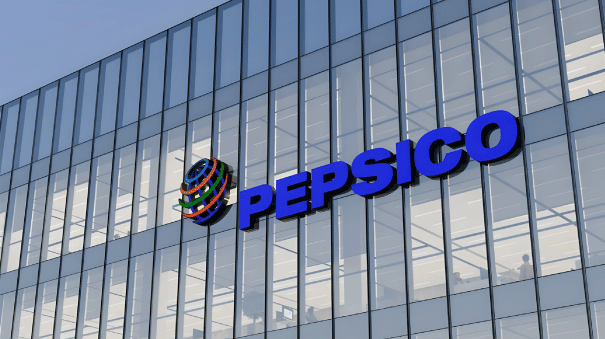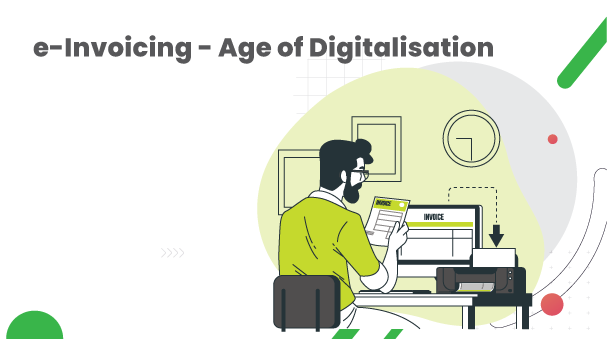Digitalisation is taking over conventional means and methodologies. What started as an electronic book and record-keeping has now extended to digital and electronic invoices. System-generated invoices have taken over the traditional bill books and handwritten invoices. However, when we talk about digital and electronic invoices, a pertinent question arises as to what is the difference between a digital invoice and an electronic invoice, especially when it comes to the Goods and Services Tax regime.
Digital Invoices vs. Electronic Invoices Gst Software
In simple terms, digital invoices are those invoices that are created digitally using computerised systems and software. Leaping further, E-invoicing or Electronic Invoicing is the system of GSTN where the B2B invoices i.e., invoices issued by a registered person to a registered person are electronically authenticated by the GSTN on the GST portal.
How does the GSTN digital E-invoicing system work?
Under the e-invoicing system, Invoice Registration Portal (IRP) issues an identification number against every invoice. All the information of the invoice is transferred to the GST portal as well as the E-way bill portal on a real-time basis thus eliminating the need to manually fill data while filing GSTR-1 and Part-A of the E-way bills.
E-invoicing Applicability
E-invoicing witnessed a phase-wise implementation starting from 1st October 2020. As per Notification No. 61/2020-Central Tax and 71/2020-Central Tax, taxpayers with aggregate turnover exceeding Rs. 500 crores had to issue e-invoice. Later, via Notification No. 88/2020, the limit of aggregate turnover was reduced to Rs. 100 crores from 1st January 2021.
Gradually, the limit came down to Rs. 50 crores from 1st April 2021 via Notification No. 5/2021. Compliance with e-invoice requirements becomes necessary as and when the turnover crosses the above limits in any of the financial years between 2017-18 to 2019-20.
E-Invoicing Non-Applicability
The e-invoicing will not be applicable to the following classes of taxpayers even though they cross the prescribed turnover levels:
- An insurer, banking company, or a financial institution, including an NBFC
- The registered person providing passenger transportation services
- GTA, i.e., Goods Transport Agency
- Services in relation to admission to the exhibition of cinematographic films in multiplex cinemas provided by a registered person
- Local authority or a government department
- SEZ unit
Process for getting E-invoice
Following is the e-invoicing process under GST:
Create invoice on your ERP solution: While the invoices are generated regularly in the business, they have to be reported to the GST portal through a separate e-invoice schema. The schema has certain mandatory parameters that need to be reported.
Your ERP software shall generate a JSON file of the invoice.
Generate a Unique IRN
Also known as Invoice Reference Number or Hash, it is generated for each uploaded document. This 64-character long IRN is generated using a hash generation algorithm by the e-invoice system. The details of the invoice generated on the ERP software shall be uploaded onto the IRP using the JSON file. The IRP will validate the B2B invoices, check for duplication errors, and generate an IRN. The composition of IRN is as follows: Seller’s GSTIN, invoice number, financial year, and the document type (INV/CN/DN).
Generation of QR Code
The IRP will generate the IRN, sign the invoice digitally and generate a QR code in Output JSON for the supplier. QR code provides a quick snapshot and validation of the invoice details on mobile devices. The QR code displays the following invoice details:-
- GSTIN of the supplier
- GSTIN of the recipient
- Date of generation of the invoice
- Invoice Number as provided by the supplier
- Number of items
- Value of invoice
- HSN Code of main items
- Hash or Unique IRN
This QR code can be verified on the central portal and through offline apps, thus facilitating the tax officers in remote places with low internet accessibility in checking the invoices. The IRP will also remit the payload to the GST portal to facilitate return filing and the E-way bill portal.
How Wepsol facilitate E-invoice compliance?
Wepsol services ensure a seamless interface for all-around compliance of e-invoicing provisions under the GST. E-invoicing is a major attempt to remove redundancy in GST-related compliances and streamline the process flow. Wepsol e-invoicing has the following offerings for the users:
- Supporting Manual, ERP and SFTP integrated e-invoice solutions
- Support for in-house implementation of e-invoicing
- Providing both GSP and ASP model of services
- Stringent policies for information security
- Association with integration partners like Oracle, SAP, etc.
What are E-invoice offerings?
When it comes to e-invoice, the e-invoice software of Wepsol provides comprehensive services and acts as a one-stop solution for all e-invoice related functions. Its e-invoice generating platform offers:
- Enhanced and distinct summary dashboard
- Bulk uploading of through excel template e-invoice data
- 3-step quick generation of e-invoice, i.e., validate, upload, and generate
- Cancel e-invoice in a few clicks
- IRN based e-invoice creation and cancellation
- Customization of e-invoice print format including company’s logo
- E-invoice print and download option
- Exception handling
- Expert and well-trained support staff
- Varied report generation including:
- View, export, and download e-invoices for multiple GSTINs
- Report for IRN generated within a range of period
- Report facilitating the easy generation of GSTR-1
Bottom Line
E-invoicing involves a load of data and transactions to be processed and uploaded.Wepsol’s e-invoice generating platform provides a robust platform to handle lakhs of transactions without compromising on performance seamlessly. It allows organizations to activate the number of users required and create their own workflow. Segregation of duties can be effortlessly done as per the requirements of the organization using a user management module. A cloud-based e-invoice software has relatively simple and easy portability and maintainability.
Keeping in mind the confidentiality of the data being transacted, Wepsol uses AES 256 bit encryption for keeping the user’s data safe and secure. Security should never be compromised at the behest of the software’s flexibility and convenience. Therefore, instead of running pillar to post for e-invoice compliance, it is far more convenient to go for a single GST software encompassing all the features. What are you waiting for?

